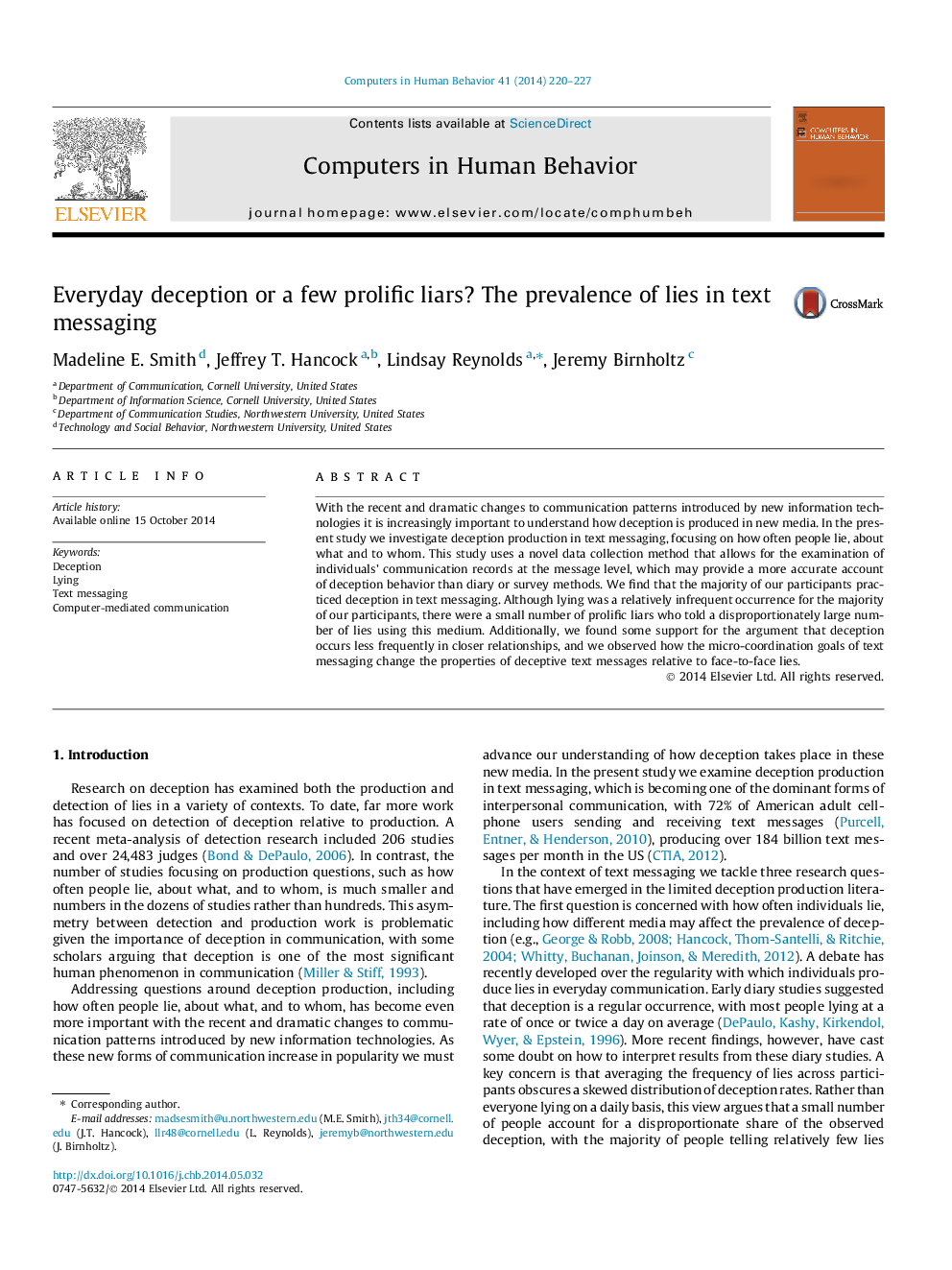| Article ID | Journal | Published Year | Pages | File Type |
|---|---|---|---|---|
| 350391 | Computers in Human Behavior | 2014 | 8 Pages |
•Most people tell lies over text messaging, and a minority of those people do so frequently.•The goals of text messaging impact the properties of deceptive text messages relative to face-to-face lies.•There is some indication that deception occurs less frequently in closer relationships.
With the recent and dramatic changes to communication patterns introduced by new information technologies it is increasingly important to understand how deception is produced in new media. In the present study we investigate deception production in text messaging, focusing on how often people lie, about what and to whom. This study uses a novel data collection method that allows for the examination of individuals’ communication records at the message level, which may provide a more accurate account of deception behavior than diary or survey methods. We find that the majority of our participants practiced deception in text messaging. Although lying was a relatively infrequent occurrence for the majority of our participants, there were a small number of prolific liars who told a disproportionately large number of lies using this medium. Additionally, we found some support for the argument that deception occurs less frequently in closer relationships, and we observed how the micro-coordination goals of text messaging change the properties of deceptive text messages relative to face-to-face lies.
